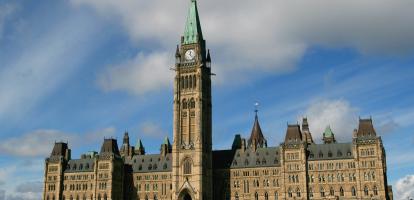The budget that federal Finance Minister Chrystia Freeland will present shortly will reveal whether the government is serious about putting the national finances on to a sustainable track.
There is room for doubt. Since 2015, the government had been running deficits larger than it promised, and larger than a strong economy justified. Then it responded to the COVID-19 pandemic with debt-financed spending on an unprecedented scale.
To assuage concerns about soaring federal debt – concerns heightened by the government’s equally unprecedented failure to present a budget at all in 2020 – the Finance Minister introduced a new concept in the government’s fall economic statement that year: fiscal guardrails. The statement explained that these guardrails would use labour-market indicators – the employment rate, hours worked and the unemployment rate – as guides for the government to discern when the COVID-19 recession was over, when one-off stimulus spending would end and when the government would return to a prudent and responsible fiscal path based on a long-term anchor.
The 2021 federal budget last spring reiterated this guardrail concept, but in somewhat diluted form. In advance of the 2021 fiscal update in December, Globe and Mail columnist David Parkinson wrote that the economy had arrived at the guardrails – but then the update dropped the concept entirely. It featured charts showing continued progress on the employment rate, hours worked and the unemployment rate – but of the promised return to fiscal prudence, it said nothing.
The Finance Minister will have no excuse for neglecting the concept again in the 2022 budget.
Statistics Canada’s Labour Force Survey results for February, 2022 showed that Canada’s labour market is red-hot. The seasonally adjusted data showed a spectacular 337,000 jump in jobs that month. Relative to February, 2020 – before the pandemic hit – total employment was up 1.9 per cent. The number of private sector employees was up 2.4 per cent and the number of public sector employees was up an eye-popping 8.0 per cent.
Hours worked – the best indicator of overall strength in the economy – hit a record high. The unemployment rate dropped to 5.5 per cent, which was lower than it was in February of 2020, and barely above the lowest rate ever.
That release confirms the picture of a job market that is putting the pandemic well behind it. The employment rate for women in the “core” 25-54 age group hit a record high – meaning that there is no more “she-cession.”
Other indicators tell a similar story. Job vacancies hit an all-time high in the third quarter of 2021. The measure of labour-shortage intensity in the Bank of Canada’s Business Outlook Survey in the fourth quarter set a new record. Respondents to the Canadian Federation of Independent Business’s February survey cited labour shortages as their most serious constraint.
Then there is inflation. The Consumer Price Index was up 5.7 per cent in February. Economy-wide inflation is even higher. At the end of 2021, current-dollar GDP was up around 12 per cent, while real GDP was up around 3 per cent. The difference between the numbers was higher prices: inflation spurred by easy monetary policy and massive debt-financed government spending. Supply constraints and rocketing commodity prices with Russia’s invasion of Ukraine have added fuel to that fire.
Under any reasonable interpretation, the Canadian economy has not only reached the guardrails the Finance Minister described in late 2020, but is breaking through them. And there is more guardrail-busting to come, because monetary and fiscal stimulus take time to act. The best time to pull back would have been before lagging indicators, such as the unemployment rate, fully recovered.
So ending unsustainable borrowing and getting federal finances on a prudent path is a critical task for the upcoming federal budget. As for a fiscal anchor, the best one is an end to deficits. The C.D. Howe Institute’s recent Shadow Federal Budget shows how the government can return to surplus by the 2024/25 fiscal year.
Ending the red ink will require decisions of a kind this government has not made before. Cuts in unnecessary spending. Forgoing new programs announced but not yet funded. Letting the surge of revenue that the hot economy and high inflation have produced flow through to the bottom line, to ensure that current Canadians – the beneficiaries of pandemic spending – do not leave the entire bill to future Canadians.
That will require political courage. But the guardrails were this government’s own idea. They laid them out. And now that the Canadian labour market has blown through them, the government is still powering ahead with borrowing. It is time for the Finance Minister to put us on the prudent path she promised.





